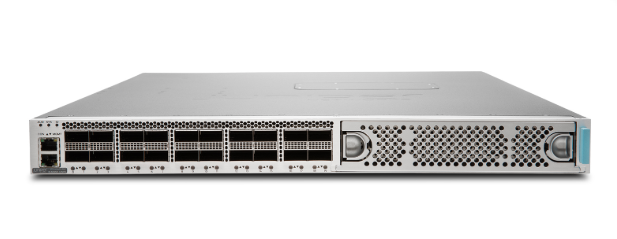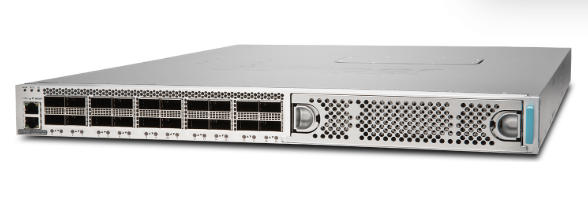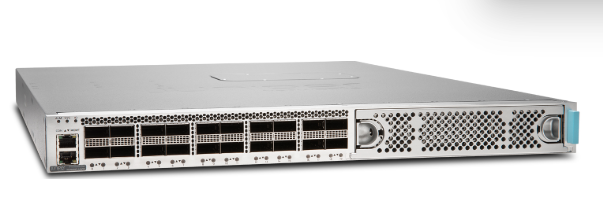Overview:
Changing market dynamics have intensified the challenge of accommodating growth with traditional products and architectures. Juniper’s secure and automated multicloud solution helps cloud-based networks quickly react to these evolving conditions, accelerating service delivery with world-class products and innovative architectural components. PTX Series Packet Transport Routers with custom ExpressPlus silicon are an integral part of this solution, delivering a massively scalable and efficient core architecture across space- and power-constrained service provider and enterprise networks, reducing TCO with innovative, highly flexible, highperformance platforms that are easy to deploy.
Product Description
Juniper Networks® PTX Series Packet Transport Routers transform the core network with physical and virtual innovations that deliver unprecedented scale at a low cost. Three fixed-configuration platforms are available: the PTX1000 Packet Transport Router, the industry’s first 2 U packet transport routing device; the PTX10001 Packet Transport Router, the industry’s first 1 U packet transport device optimized for cost-optimized transit routing, the PTX10002 Packet Transport Router, a secondgeneration device that doubles the density of the PTX1000 with Juniper Networks ExpressPlus™ silicon in addition to the PTX10003, the industry’s first 3U 400-GbE enabled packet transport routing device. These packet transport routers give cloud and communication providers the freedom to develop and deliver new virtualized services anywhere in the network. They can also create an elastic architecture with precise traffic control without compromising the service experience.
The Evolving Landscape
New traffic dynamics such as mobility, video, and cloud-based services are transforming traditional network patterns and topologies. Stratified, statically designed, and manually operated networks must evolve to support the constantly growing volumes of traffic quickly and economically. Many operators have seen their profits stagnate and TCO grow under the burden that these growing traffic volumes are imposing. Service providers need to become more agile in order to optimize their existing network resources, shorten planning cycles, and remove rigid network layers.
Operators are facing the following challenges under the current environment:
- Static scale: The cloud and communication providers’ backbone handles the full weight of network traffic. Therefore, it is paramount that the core network be able to grow organically along with traffic to meet escalating demands. 400-GbE, inline MACsec, Silicon, system, and SDN innovations for the core empower service providers to scale faster than the traffic in an elegant, elastic, redundant package—without requiring forklift upgrades
- Static architecture: Virtualized services and the explosion of cloud-based applications are creating increasingly unpredictable traffic patterns. To handle this unpredictability, service providers need a dynamic, scale-out architecture across all layers to create programmable, traffic-optimized networks that support any service, anywhere.
- Power costs: For cloud and communication providers, the operational cost of transmitting a packet through the core is less than the cost of the power required to move that packet. In fact, projections suggest that over a few short years, the total power draw will exceed the cost of deploying the entire network infrastructure. Efficient power utilization by the core router requires a holistic ground-up engineering approach.
- Facility limitations: Service providers cannot grow their facilities exponentially forever. They need innovations that provide a low-touch deployment model optimized around space availability, facility power requirements, and floor weight thresholds. Transport-oriented central office locations have the added burden of meeting European Telecommunications Standards Institute (ETSI) standard depth. Any transit router innovation must operate within these constraints.
In order to address these challenges, cloud and communication providers need an innovative core router that satisfies three defining principles: performance, deployability, and SDN programmability. The PTX1000, PTX10001, PTX10002 and PTX10003 fixed-configuration packet transport routers provide the foundation for a scale-out core backbone architecture, ensuring a consistent user experience across geographies. The PTX1000, PTX10001, PTX10002 and PTX10003 meet all existing traditional core requirements, easily fitting into cloud and communication provider networks that require transitfocused IP/MPLS applications such as Internet peering, scaleout metro and backbone topologies, and label-switching router (LSR) optimized deployments.
The PTX10001, which offers MACsec on all 10GbE, 40GbE, and 100GbE interfaces, is designed for low-buffer, lowforwarding information base (FIB), low-power, and high-density LSR core applications.
Architecture and Key Components:
The PTX1000, PTX10001, PTX10002 and PTX10003 fixedconfiguration packet transport routers bring physical and virtual innovation to the service provider core network, addressing concerns about operational expenditures while scaling organically to keep pace with growing traffic demands with the following features:
- Core routing: The PTX1000, PTX10001, PTX10002, and PTX10003 employ a massively scalable (3+ Tbps/U) yet compact 1, 2, or 3 U form factor.
- Data Center Interconnect (DCI): The routers offer inline MACsec, with no compromise in throughput or latency.
- Peering: The PTX1000 and PTX10002 provide up to 3 million FIB and 20+ million routing information base (RIB) in a 2 U footprint. The PTX10003 provides the same peering capability with dense 100/200/400GbE and inline MACsec in a 3 U footprint.
- LSR P functions: The PTX10001 provides scalable, costoptimized, and secure P functions.
Physical innovations at the core silicon level enable the PTX Series fixed-configuration routers to reduce OpEx. Powered by ExpressPlus silicon, these devices build upon the Juniper Networks Junos® Express silicon concepts of low consistent latency and wire-rate packet performance for both IP traffic and MPLS transport, without sacrificing the optimized system power profile. These concepts are incorporated into the PTX Series design along with full IP functionality, preserving the spirit of the original Junos Express chipset. The ExpressPlus silicon is the first purpose-built telecommunications silicon to engineer a 3D memory architecture into the base design for more than 1.6 billion filter operations per second, dynamic table memory allocation for mammoth IP routing scale, and enormous power efficiency gains. While the PTX10001 has inbuilt MACsec, it does not have external memory. The PTX10003 supports inline MACsec on all 10/100/100/400GbE interfaces.
PTX1000, PTX10001, PTX10002, and PTX10003 Fixed-Configuration Packet Transport Routers
PTX1000
The PTX1000, with its rich IP/MPLS feature set, lets service providers organically distribute peering points throughout the network without sacrificing performance and deployability—the main contributors to eroding TCO for service providers when peering. The PTX1000 expands the applications scope that the PTX Series architecture addresses, enabling service providers to implement a distributed core architecture for interconnecting growing cloud services. Service providers can distribute peering points to match traffic demand with an optimized core router without sacrificing performance or deployability. The PTX1000 is a first-generation fixed-configuration core router in a compact, 2 U form factor, making it easily deployable in space-constrained Internet exchange locations, remote central offices, and embedded peering points anywhere in the network, including cloud-hosted services.
The PTX1000 operates at 2.88 Tbps in a fixed core router configuration and supports flexible interface configuration options, including 288 10GbE ports via a quad small form-factor pluggable plus transceiver (QSFP+) breakout, 72 40GbE ports via QSFP+, and 24 100GbE ports via QSFP28.
PTX10001
The PTX10001 is a MACsec-enabled LSR core router featuring a compact, 1 U form factor that is easy to deploy in spaceconstrained backbone environments. Operating at 3.6 Tbps in a fixed core router configuration, the PTX10001 supports flexible interface options, offering 36 physical QSFP28 100GbE ports, 36 QSFP+ 40GbE ports, and 144 10GbE ports via QSFP+ breakout cables. MACsec is enabled on all interfaces.
PTX10002
The PTX10002 is a second-generation PTX Series fixedconfiguration core router featuring a compact, 2 U form factor that is easy to deploy in space-constrained Internet exchange locations, remote central offices, and embedded peering points throughout the network, including cloud-hosted services.
The PTX10002 operates at 6 Tbps in a fixed core router configuration. It supports flexible interface configuration options, offering 60 physical quad small form-factor pluggable 28 (QSFP28) 100GbE ports, 60 QSFP+ 40GbE ports, and 192 10GbE ports via QSFP+ breakout cables.
PTX10003
The PTX10003 is a fixed-configuration core router featuring a compact, 3 U form factor that is easy to deploy in spaceconstrained Internet exchange locations, remote central offices, and embedded peering points throughout the network, including cloud-hosted services. The PTX10003 uniquely addresses power-constrained environments by providing unprecedented power efficiency of 0.2 watts/Gbps. Two versions of the PTX10003 are available, supporting 8 Tbps and 16 Tbps respectively in a 3 U footprint.
Operating in a fixed core router configuration, the 8 Tbps model features flexible interface configuration options with universal multi-rate QSFP-DD for 100GbE/400GbE/FlexE to support 160 (QSFP+) 10GbE ports, 80 (QSFP28) 100GbE ports, 32 (QSFP28- DD) 200GbE ports, and 16 (QSFP56-DD) 400GbE ports.
The 16 Tbps model also offers universal multi-rate QSFP-DD for 100GbE/400GbE/FlexE to support 320 (QSFP+) 10GbE ports, 160 (QSFP28) 100GbE ports, 64 (QSFP28-DD) 200GbE ports, and 32 (QSFP56-DD) 400GbE ports.
Features and Benefits:
Performance is one of the guiding design principles for the PTX Series Packet Transport Routers. This focus empowers service providers with superior scale to match increased traffic levels and network engineering challenges with predictable system latency to improve the overall service experience, deliver best-in-class resiliency, and ensure that services meet strict customer servicelevel agreements (SLAs). Deployability is the other guiding design principle for the PTX Series routers, focusing on power, space, and weight—fundamental concerns that impact service providers’ operational budget with respect to growing traffic.
Infinite programmability with automation and telemetry brings virtual innovations to the service provider core, while the NorthStar Controller is an open, standards-based solution that optimizes both the IP layer and the transport layer with precise SDN control, allowing service providers to automate and scale operations
Fixed-Configuration PTX Series Features and Benefits
| Feature |
Feature Description |
Benefit |
| System capacity |
The PTX1000 scales to 3 Tbps in a single chassis, breaking out into 288 10GbE, 72 40GbE, and 24 100GbE interfaces. The PTX10001 scales up to 3.6 Tbps in a single chassis, breaking out into 144 10GbE, 36 40GbE, and 36 100GbE interfaces.
The PTX10002 scales to 6 Tbps in a single chassis, breaking out into 192 10GbE, 60 40GbE, and 60 100GbE interfaces.
The PTX10003 8 Tbps model scales to 8 Tbps is a single chassis, breaking out into 160 10GbE, 80 100GbE, 32 200GbE, and 16 400GbE interfaces.
The PTX10003 16 Tbps model scales to 16 Tbps in a single chassis, breaking out into 320 10GbE, 160 100GbE, 64 200GbE, and 32 400GbE interfaces. |
The PTX1000, PTX10001, PTX10002, and PTX10003 give cloud and service providers the performance and scalability needed to outpace growing traffic demands. |
| High availability hardware |
The PTX1000, PTX10001, PTX10002 and PTX10003 are built with hardware redundancy for cooling, power supplies, and forwarding. |
HA is critical for service providers to maintain an always-on infrastructure base and meet stringent SLAs across the core. |
| Packet performance |
The PTX1000 and PTX10002 include groundbreaking ExpressPlus silicon, empowering them with unparalleled packet processing for both full IP functionality and MPLS transport, leveraging a revolutionary 3D memory architecture.
The PTX10001 uses Express-based silicon, one of the industry’s highest density, lowest latency, and lowest buffer solutions. The PTX10003 uses a newer version of ExpressPlus silicon that delivers inline MACsec on all ports and dense 100/400GbE. |
Exceptional packet processing capabilities help alleviate the challenge of scaling the network as traffic levels increase while optimizing IP/MPLS transit functionality around superior performance and elegant deployability. The PTX10001 is tailored for LSR core router applications, with support for more than 128,000 LSP. |
| Ultra-compact 2 U form factor |
With cutting-edge innovation in power and cooling technology, the PTX10002 is the only fixed-configuration core router that provides 6 Tbps of capacity in a 2 U form factor. The PTX1000 provides 2.88 Tbps of capacity in a 2 U form factor. The PTX10001 is the first 1 U LSR router with MACsec built in. The PTX10003 provides up to 16 Tbps of capacity in a 3 U form factor. |
Space efficiency is a critical requirement for peering Internet exchange points, peering collocations, central offices, and regional networks, especially in emerging markets. |
| Security |
The PTX Series Packet Transport routers use a combination of hardware-based mechanisms like MACsec and softwarebased features like firewall filters and DDoS to provide scalable security |
Inline data plane MACsec security with no throughput or latency penalties in addition to control plane security with DDoS. |






